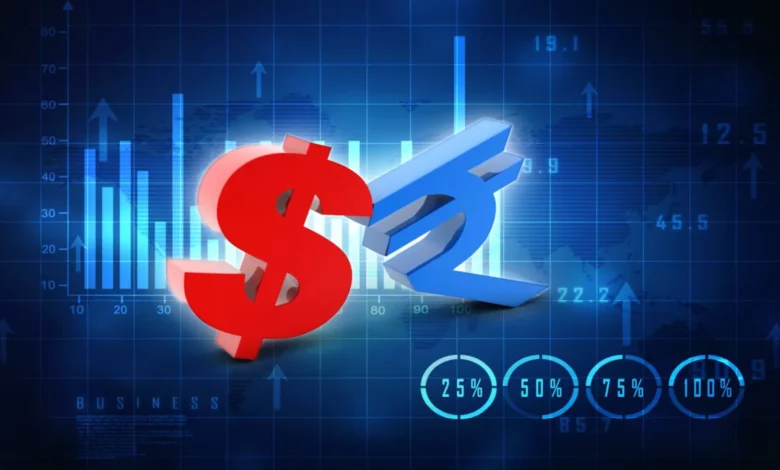The highest rupee increase in four years is attributed to lower US inflation.

The highest rupee increase in four years is attributed to lower US inflation.
The Indian Rupee increased by more than 4 percent on November 11 morning, its major rise in four years, following advances in Asian peers as the likelihood of a slower percentage increase by the Federal Reserve increased due to lower-than-expected US consumer price inflation.

The local currency started at a peak of 80.69 dollars. The exchange percentage was up 1.31 percent from its earlier estimate of 81.81 at 9.34 a.m., the most significant gain because of December 18, 2018. Against forecasts of 7.9 percent YoY, the US core CPI statistic comes in at 7.7 percent over the past year (0.4 percent month to month) (0.6 percent MoM).
Market forecasts for the US Funds rate percentage were reduced as a result of the weaker CPI reading, from 5 to 5.25 percent to 4.75 to 5 percent. IFA International Research Academy predicts that the Fed will likely tone down its hawkish foreign policy if inflation shows signs of slowing.
Asian and EM currencies are in reversing mode as a result, according to CR Forex’s note. “First, fresh NFP data caused a rally in equities and sank the USD, then the election, the present is due the CPI, and a new reason will be developed tomorrow,” the note said.

Well, a change in sentiment can be observed because the market creates more arguments for rising than for falling. Despite no significant difference in the fundamentals over the past ten days, if that is the case, it is likely where it wishes to go structurally, according to the CR Forex report.
Most Asian currencies had a swift relief rally as a dovish Fed will imply that Asian securities and equities would retain their attraction relative to the US. The difference in interest rates between the US and India is at its smallest point in 12 years. Dollar inflows into domestic bonds have been steadily declining for several months because the difference in interest rates has shrunk.
Additionally, the overnight significant decline in the dollar index has motivated sentiment. The dollar index experienced its lowest fall in 13 years overnight. The index fell by 2 percent at the close, the most since March 2009.

In the previous five sessions, the Rupee increased in four of them. The Rupee has risen by 2.5% since September 11 during this time. This profit was partly a result of ongoing foreign investment in domestic equity markets. FIIs have invested $3.28 bn in the equities markets since October 20.
From its earlier finish of 7.35 percent, the 10-year treasury yields decreased by over ten percentage points to 7.25 percent. Bond prices and prices follow different trajectories.
According to Juan Perez, manager of trade at Monex USA, “there are many global challenges, and we can’t ignore them, and it puts a lot of decline on global growth.” Perez was alluding to the dollar’s allure as a haven. After consecutive 75-basis point percentage hikes by the Federal in June and July, the US Consumer Prices Index report due out on Wednesday is anticipated to reveal that decades-high inflation subsided in July.
However, data released on Friday revealed that US companies employed many more people than anticipated in August and that wages continued to rise quickly, raising expectations for another enormous percentage increase by the ECB at its meeting on September 20–21.

According to money market futures, there is a roughly two-thirds likelihood of a 75 basis point increase next month. According to Edward Moya, a senior industry expert at Oanda, “we’ve been getting regularly hotter-than-expected inflation figures, and if that occurs again, the market is not ready for that.” In response to the likelihood of further dollar strength, he remarked, “If that occurs, we’re testing par again versus the euro.”
However, capital inflows are likely to limit damage to Indian assets. Domestic benchmark shares began lower, matching losses on Wall Street and wider Asia bourses. According to the most recent exchange data, institutional investors from abroad were net purchasers on the financial market on Monday, buying shares worth 1,449.70 crores.
While waiting for the data, Asian currencies are flat to slightly weak. As long as there is uncertainty about inflation, conflict, and US Fed rate hikes, dips in the USD/INR are being bought, according to Bhansali, who noted that the Rupee’s trading range is from 79.40 to 79.80.

Bhansali continued, “Exporters may sell close to levels of 79.80 while imports may buy close to levels of 79.40 to hedge the month-end payables. The major risks indicate that the session will be volatile. Due to anticipated capital flight to safer locations in response to recession fears and potential Fed rate hikes, which would result in greater returns for capital there, the rupee depreciation will, however, somewhat offset this effect.
Compared to Wednesday’s finish of 79.64, the Rupee was selling at 79.80 over the Us dollar in the early trading on Thursday. According to D K Joshi, chief economist at Crisil, the decline in commodity prices will significantly impact WPI-based inflation more than CPI-based inflation. According to his calculations, instead of the historical pattern of 30%, global factors now account for 60% of the increase in the WPI.
However, the US Federal Reserve‘s vigorous tightening would put a lot of pressure on the Rupee and offset any benefits from the recent drop in commodity prices around the world. “The effect will rely on how much and how long the Rupee declines.
)
The Rupee fell against the dollar less than its long-term trend in the earlier episodes of substantial devaluation, but it also corrected as the dangers subsided, Joshi added. He stated that the growing situation has too many moving elements and is exceedingly complex.
Aditi Nayar, the chief economist at ICRA, stated that given the rise in US inflation, commodities prices would likely be suppressed due to predictions of aggressive monetary tightening. According to her, “in the Indian context, it should lead to a lower WPI inflation more quickly, with a comparatively slower transfer to the retail inflation.”
Given the significant demand in this sector, it is important to monitor inflation developments in the home services sector. According to Sakshi Gupta, head economist at HDFC Bank Treasury, the increase in US inflation may indicate more pronounced rate hikes by the US Fed — up to 100 percentage points in the following policy — heightening concerns about a potential recession.
In the short run, she noted, “the ensuing influence on oil prices and reducing domestic inflation could exceed the “rupee devaluation” benefit for India.” Yuvika Singhal, the principal economist at Quantico Research, noted that the valuation of most commodity markets has mediated in recent weeks as a result of market participants taking into account the possibility of a significant slowdown in global demand due to aggressive tightening cycle in many countries, with the Central bank leading the pack, and amid signs of a resurgence in Covid instances in a few countries.

She added that the possibility of an exchange rate depreciation is progressively becoming more apparent while anticipating more rupee loss toward 81 versus the dollar. However, she continued, “we expect the size would be small, with 15-20 cumulative effect on headline CPI inflation. Nevertheless, this could raise the specter of inflationary pressures in the upcoming months.
She asserted that the pluses and minuses of risks associated with inflation would be balanced. But according to Bank of Baroda Chief Economist Madan Sabnavis, domestic forces will drive CPI while WPI may begin to drop as global prices of metals, chemicals, etc., decline.
The inflation percentage in the US is not the same as ours. Because manufacturers are passing on more major input costs, prices have increased. The elements of production (supply), seasonality, imports (oils), and food processing all contribute to substantial food inflation (higher input costs). Re-pricing has resulted in higher prices for services. As a result, he said a new set of circumstances is causing our inflation.
According to Rahul Bajoria, MD & top India economist at Barclays, the ratcheting up anticipation of a more front-loaded US rising cycle will negatively influence risk sentiment. This is seen in both treasury yields and the Rupee.

However, he added, “over the medium term, India’s economic fundamentals would determine India’s asset prices. The US consumer price index increased 9.1% in June from a year earlier, which is the highest annual increase since 1981.
In India, WPI inflation decreased slightly to 15.18% in June from the three-decade high of 15.88% in May, while CPI inflation only decreased somewhat to 7.01% in June from 7.04% in the before month. Retail price inflation exceeded the monetary policy committee’s prescribed upper tolerance level of 6% in June for the sixth consecutive month.
Edited by Prakriti Arora






